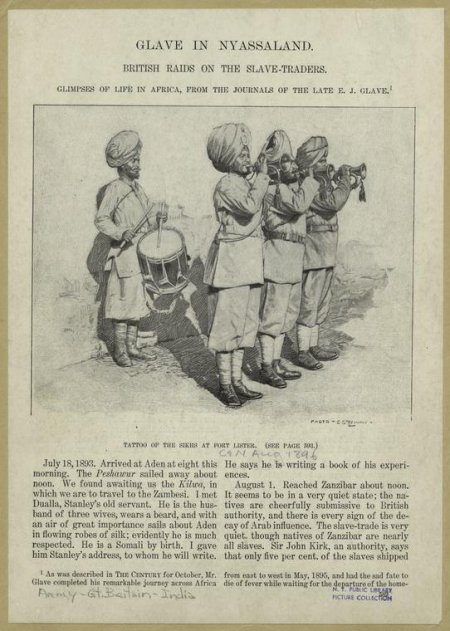From the democratic point of view, we must say that in a true democracy nothing should be done for the people. The writer who defines his audience by its limitations is indulging in the unforgivable arrogance. The writer must define his audience by its abilities, by its perfections, so far as he is gifted to conceive them. He does well, if he cannot see his right audience within immediate reach of his voice, to direct his words to his spiritual ancestors, or to posterity, or even, if need be, to a coterie. The writer serves his daemon [creative spirit] and his subject. And the democracy that does not know that the daemon and the subject must be served is not, in any ideal sense of the word, a democracy at all.
In short, there should be a place where people write, freely assuming their audience knows way more than the average reader of USA Today. Serious writers and thinkers should feel free to take advantage of such an intellectually enlivened -- if rarefied -- space to work out complex ideas. And if that means a few thousand readers a day rather than a few million, then so be it. The circulation of your magazine (or today, your hitcount) is not everything; if it is, you're probably not doing your best thinking.
This idea of the writer's "daemon" or "daimon" (which is not the same as "demon," in case anyone is confused) is one that Trilling comes back to in various ways in many other essays. I notice it, for instance, in Trilling's "T.S. Eliot's Politics" (1940) in which his general purpose is to review Eliot's rather less-than-inspiring book, Christianity and Culture:
What the philosophy of the [French] Revolution lacked or denied it is difficult to find a name for. Sometimes it gets called mysticism, but it is not mysticism and Wordsworth is not a mystic. Sometimes, as if by a kind of compromise, it gets called "mystery," but that, though perhaps closer, is certainly not close enough. What is meant negatively is that man cannot be comprehended in a formula; what is mean positively is the sense of complication and possibility, of surprise, intensification, variety, unfoldment, worth. These are things whose more or less abstract expressions we recognize in the arts; in our inability to give this quality a name, our embarrassment, even, when we speak of it, marks a failure in our thought. But Wordsworth was able to speak of this quality and he involved it integrally with morality and all the qualities of mind which morality suggests.
In the lines just before this passage, Trilling has been talking about Wordsworth's turn against the radical politics of the French Revolution during the Reign of Terror as a possible model for Eliot, in the latter's antagonistic relationship with the Anglo-American left in the 1930s. I read Trilling here as saying that what Wordsworth wanted to do was use art to think about things that are too complicated (which could also mean: too personal, too mysterious, too dynamic) to be represented via any available political or ideological system. Trilling would equally value the pursuit of complexity to anyone engaged in artistic creation or serious criticism of the arts. Thus, it's no surprise to see almost exactly the same sentences at the end of the preface to The Liberal Imagination:
It is one of the tendencies of liberalism to simplify, and this tendency is natural in view of the effort which liberalism makes to organize the elements of life ian a rational way. And when we approach liberalism in a critical spirit, we shall fail in critical completeness if we do not take into account the value and necessity of its organizational impulse. But at the same time we must understand that organization means delegation, and agencies, and bureaus, and technicians, and that the ideas that can survive delegation, that can be passed on to agencies and bureaus and technicians, incline to be ideas of a certain kind of a certain simplicity: they give up something of their largeness and modulation and complexity in order to survive. The lively sense of contingency and possibility, and of those exceptions to the rule which may be the beginning of the end of the rule--this sense does not suit well with the impulse to organization. So that when we come to look at liberalism in a critical spirit, we have to expect that there will be a discrepancy between what I have called the primal imagination of liberalism and its present particular imagination. The job of criticism would seem to be, then, to recall liberalism to its first essential imagination of variousness and possibility, which implies the awareness of complexity and difficulty.The gestures Trilling is making in the two passages quoted above are not the same, but they do rhyme. In one place, Trilling is asking his readers to take T.S. Eliot's conservatism seriously, by substituting Wordsworth's turn away from radicalism for Eliot's. He uses the example of Wordsworth's prodigious poetic output as proof of the value of the endeavor. In the second instance, Trilling suggests that it is the role of criticism to go against the utilitarian tide -- the dominant stream of technicians, explainers, and by extension to our own day, the shallow ideas that can be presented on Television in a minute or two (or on Internet weblogs in a meme or two). Criticism, he hopes, will be a space where people can think about things that may not necessarily go anywhere, where transparent use-value is not quite the goal.
In both essays, it's important to note that Trilling -- a life-long New York liberal, of Jewish descent -- is in some sense praising his enemies. (With Eliot, that might have been especially difficult to do, given the circumstances.) His essay on Eliot is Trilling demonstratively respecting Eliot's ideas, even though he feels Eliot's argument doesn't quite work. And in the essay on liberalism, Trilling spends quite a number of pages praising John Stuart Mill (an early 19th century liberal, and one of the architects of 19th century philosophy of utilitarianism) for praising Coleridge's Establishment conservatism. Trilling reads Mill's generosity to Coleridge as a model for what he himself should do.
The political modulation (which in our current political idiom might be called "waffling") is important because it makes Trilling's emphasis on "complexity" either suspect or especially noble, depending on your perspective. "Complexity" in the two instances is shown by the refusal to tear down one's enemy, to respect the Conservatives in Liberalism's (dominant) midst. Without this necessary nuance, "complexity" is actually a bit too simple an idea to be interesting. With it, the connection between a kind of intellectual discipline to a humanist ethical imperative becomes clear.


